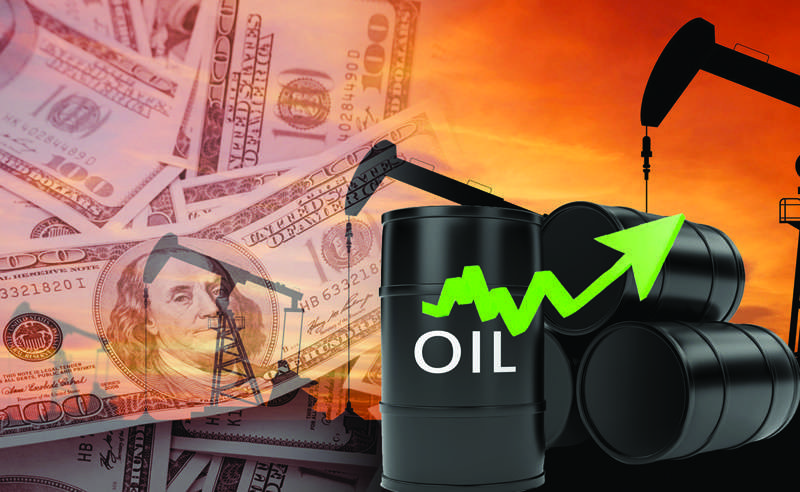Crude oil prices surged this week, maintaining an upward trajectory despite significant geopolitical tensions and a rise in U.S. crude oil inventories.
Market analysts suggest that while factors such as refinery maintenance and geopolitical developments continue to impact trading sentiment, the overall outlook remains cautiously optimistic.
According to Oilprice.com, Brent crude is trading at $76.27 per barrel, while West Texas Intermediate (WTI) is valued at $72.27 per barrel.
The increase in prices comes despite the U.S. Energy Information Administration (EIA) reporting another build in crude oil stocks for the second week of February, a trend that typically exerts downward pressure on oil prices.
However, the inventory build was offset by drawdowns in refined fuels due to seasonal refinery maintenance, thereby stabilizing prices.
Market analysts believe that the latest price movements underscore the complex interplay of supply and demand dynamics in the global oil market.
Royal Bank of Canada analysts noted in a report cited by Bloomberg that “Prices will likely remain rangebound, continuing to move with headlines.” They added that traders are increasingly inclined to bet on price stability as no major market catalysts have yet materialized.
Geopolitical Impact on Crude Oil

In the geopolitical landscape, oil prices faced pressure from ongoing U.S.-Russia negotiations. Both sides have indicated that the discussions have been productive, with the potential for a peace deal that may also lead to sanction relief for Russia.
Such a development would likely be bearish for crude oil prices, as it could increase Russian oil exports and alleviate supply constraints. However, the prospect of peace talks has not been well received by Ukraine, with President Volodymyr Zelensky reportedly expressing strong opposition.
The uncertainty surrounding the negotiations has left many oil traders hesitant.
“Expectations for a potential peace deal between Russia and Ukraine, which could ease sanctions on Moscow, have faded somewhat due to Ukraine’s hardened stance, prompting some investors to buy back into the market.”
Toshitaka Tazawa, Fujitomi Securities analyst
Despite the U.S. administration’s emphasis on lowering gasoline prices—a key campaign promise of former President Donald Trump—its geopolitical stance remains a key influence on oil prices.

Tazawa suggested that any relaxation of Russian sanctions could lead to increased oil supply, potentially curbing the rally in crude prices.
Another key driver of oil prices this week was an attack by Ukraine on a compressor station linked to the Caspian Pipeline Consortium (CPC).
The attack disrupted the flow of Kazakh oil to global markets, causing an estimated reduction of between 30% and 40% in oil shipments along the CPC pipeline. The supply disruption has added to market volatility, with concerns that prolonged instability in the region could tighten global supplies further.
The CPC pipeline is a critical conduit for Kazakh crude oil exports, which are largely directed toward European markets. Any prolonged disruption could further complicate global supply chains, adding upward pressure to oil prices in the near term.
Oil market sentiment remains cautious as traders weigh geopolitical risks against fundamental supply and demand factors.
The upcoming weeks will be crucial in determining whether prices sustain their upward momentum or face renewed downward pressure due to inventory builds and potential geopolitical breakthroughs.
Additionally, with the refinery maintenance season underway, fuel drawdowns are expected to continue, influencing crude oil demand dynamics. Analysts also highlight that ongoing OPEC+ production strategies and U.S. shale output trends will play a pivotal role in shaping price movements.
Crude oil prices remain buoyant despite significant headwinds, with traders closely monitoring geopolitical developments and inventory data. As uncertainty persists, market participants are bracing for continued volatility in the weeks ahead.























